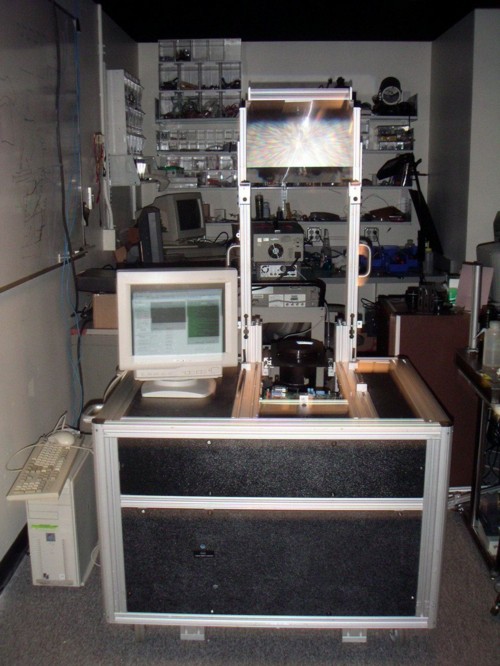|
Cambridge-MIT View
Sequential Display
Oliver Cossairt, Christian
Moller, Steve Benton, Adrian Travis
|

|
Abstract
View-sequential 3D displays are used to create images whose appearance
changes with viewing position so that scenes can be displayed with
motion parallax, which is an important depth cue that greatly improves
the apparent realism of displayed images. View-sequential displays
utilize a time-multiplexing principle to display images at different
viewing directions sequentially in time. The concept of view-sequential
displays was first demonstrated at the Cambridge University Photonics
and
Sensors
Lab. In 2002, Cambridge University and MIT collaborated
to build a view-sequential 3D display using a Texas Instrument DMD™ in
conjunction with a fast
switching ferro-electric shutter. The display is capable of producing
16 views at 15-bit color with a refresh rate of 50Hz. In 2004,
Christian Moller founded the company Setred
to commercialize view-sequential 3D displays for
Medical Imaging and Oil and Gas Visualization.
Publication
|
Display Optics
View-Sequential display optics consist of a pixel generating device, an
objective (projection) lens, an active shutter, and a field lens. For
the Cambridge-MIT display, a 3-chip DMD projector is used to generate
images and an custom designed FLCD for the shutter. The FLCD and DMD
are closely synchronized so that a one 15-bit color image is displayed
while a single shutter element is open on the FLCD. A sequence of 16
images/shutter pairs are updated in 1/50th of a second.
|
Images
These are images taken from a single viewpoint of 3D objects displayed
on the the view-sequential display.
 |

|
A
3D
image
of
a
CG
aeroplane
|
A
3D
image
of
a
CG
butterfly
|
|
Videos
These are videos showing motion parallax for 3D objects displayed on
the view-sequential display.
|
|
|



